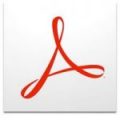- Report #: NT FIRE 049
- Approved: November 2005
- Version: 2
Abstract
This Nordtest method is intended to provide a basis for classification of commodities. On the basis of this classification, relevant sprinkler protection can be achieved according to the European sprinkler standard, EN 12845.
The classification test procedure is highly standardised. The aim is to determine the hazard level of a commodity by comparing the test results with data from identical tests on well-defined “standard” commodities, with fire characteristics similar to commodities of Category I, II, III and IV. These tests, forming the basis of this philosophy, are described in SP Report 2003:03 [2]. Additional information is provided in SP Report 1993:70 [3].
If a tested product shows fire characteristics similar to one of the standard commodities, it is assumed that the same protection requirements are adequate for the tested commodities.
A rack storage configuration is used in the classification tests. However, the results may also be applied to freestanding, palletized rack and post-pallet storage configurations, using the design criteria given for these configurations in EN 12845.
It is important to note that the commodity classification tests do not directly provide the protection requirements e.g. design water density for the commodity tested although reference is made to a range of water discharge densities in the tests. The purpose is to determine the hazard level of the commodity. It should also be noted that this classification procedure has been developed for ordinary combustible hazards. Commodities such as exposed plastics, aerosols and containers with flammable liquids may represent a hazard that exceeds that of Category IV commodities, and should therefore be considered as “special hazards”. Requirements for the protection of “special hazards” are given in Annex G, “Protection of special hazards” of EN 12845.
Categories and tags

